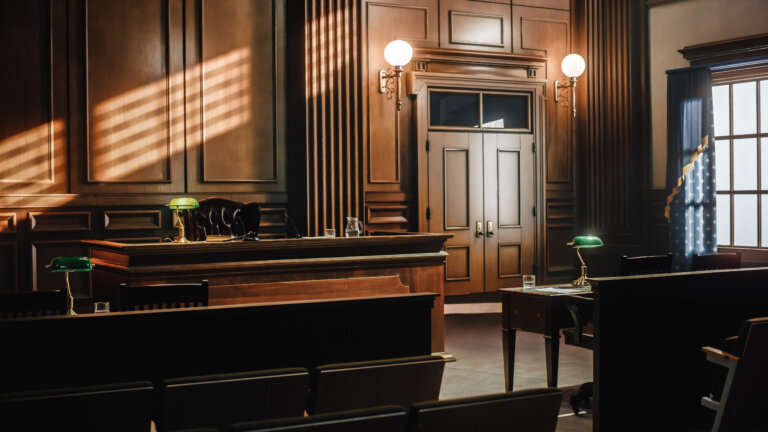When the Administration for Children’s Services (ACS) becomes involved in a child protective case, two types of early hearings often determine whether a child remains at home or is removed while the case proceeds — the 1027 hearing and the 1028 hearing. Though they may appear similar, they serve distinct purposes at different procedural stages of an Article 10 proceeding. Understanding the difference between the two is essential for any parent navigating an ACS investigation, and for practitioners advocating in Family Court.
As an experienced New York ACS attorney knows, both hearings address the same urgent question — whether the child faces “imminent risk to life or health.” Yet the path that leads to each, and the procedural rights afforded to parents, vary in important ways.
The 1027 Hearing: The Court’s First Opportunity to Assess Risk
Under Family Court Act § 1027, once a neglect or abuse petition has been filed, the court must promptly determine whether “the child’s interests require protection,” including whether the child should be removed from the home. The hearing is generally held the next court day after the petition is filed and continues “on successive court days, if necessary, until a decision is made.”
Temporary removal is authorized only where the court finds it “necessary to avoid imminent risk to the child’s life or health.” The statute also directs the judge to consider whether the risk can be mitigated through reasonable efforts or by issuing a temporary order of protection excluding the alleged offending adult rather than removing the child .
The Court of Appeals in Nicholson v. Scoppetta clarified that the danger must be “near or impending, not merely possible.” Courts consistently emphasize that the harm of removal must be weighed against the risk of leaving the child at home . For example, in Matter of Brycyn W. (2024), the Second Department affirmed a Family Court order removing a child under § 1027, finding a “sound and substantial basis” that the child would face imminent risk in the mother’s care and that the risk could not be mitigated through less restrictive means .
Conversely, a 1027 hearing may also result in the child being returned home or placed with a non-respondent parent if the court determines ACS failed to prove imminent danger. In Matter of Nasir C. (2020), ACS sought removal of a newborn from the mother’s care based on her history with other children, but the Family Court initially denied the petition. On appeal, however, the Appellate Division reversed, finding that the mother’s unresolved history of prior abuse justified temporary removal .
The 1027 hearing, then, is the court’s first safeguard — an emergency assessment of safety before any prolonged separation of a child and parent.
The 1028 Hearing: The Parent’s Right to Seek the Child’s Return
If a child has already been removed — either after a 1027 hearing, or through emergency removal under § 1024 — the parent is entitled to a 1028 hearing to seek the child’s return. Section 1028 mandates that, upon the parent’s application, “a hearing shall be held within three court days of the request.” The court must return the child unless it finds that “the return presents an imminent risk to the child’s life or health.”
The purpose of a 1028 hearing is to give the parent a prompt opportunity for reunification, balancing the same imminent risk standard with the child’s best interests. In Matter of Tatih E. (2019), the Appellate Division reversed a Family Court’s decision granting return, holding that the mother’s admitted use of excessive corporal punishment and failure to address her mental health concerns made return unsafe .
Similarly, in Matter of Louie L.V. (2019), the Second Department emphasized that a § 1028 hearing is designed for a “prompt reunion with the child pending trial.” The court noted that while the evidentiary standards are relaxed at a 1028 hearing, the determination “should not be taken as any indication of what ultimate determination should be made” at a later fact-finding hearing .
Importantly, the right to a 1028 hearing extends even when a parent is excluded from the home under an order of protection rather than through physical removal. In Matter of Elizabeth C. (2017), the Appellate Division held that due process requires an expedited hearing when a parent is barred from contact with their children by a “full stay-away” order of protection. The court reasoned that exclusion from the home “is for all practical purposes akin to a physical removal of the children,” and that the same “imminent risk” standard applies .
The Constitutional Foundation: Due Process and Prompt Review
The distinction between §§ 1027 and 1028 hearings ultimately lies in timing and due process. Section 1027 protects the child by allowing swift judicial intervention at the outset of a petition, while § 1028 protects the parent by guaranteeing a prompt post-removal hearing. Together, they embody what the Appellate Division in In re Z. (1972) described as a constitutional balance — permitting emergency removal without the parent’s presence, but ensuring that due process is accorded by the prompt right to seek return .
These hearings are not final determinations of neglect or abuse. They are preliminary safety assessments designed to preserve both the welfare of the child and the constitutional rights of the family. Courts have repeatedly warned against conflating them with fact-finding hearings, where the burden of proof and evidentiary standards are higher .
Why the Distinction Matters
For parents, the difference between a § 1027 and § 1028 hearing can mean the difference between temporary separation and swift reunification. For practitioners — especially an experienced New York ACS attorney — understanding these distinctions is crucial to protecting a client’s rights at every stage of the process.
A skilled attorney must be prepared to:
- Demand a § 1028 hearing immediately following an emergency removal;
- Challenge ACS’s proof of imminent risk and propose reasonable alternatives such as supervision, therapy, or orders of protection;
- Emphasize the harm of unnecessary separation, consistent with Nicholson v. Scoppetta;
- Ensure that any exclusion orders are reviewed promptly under the due process standards articulated in Elizabeth C..
Conclusion
In New York Family Court, §§ 1027 and 1028 hearings form the constitutional backbone of child protection proceedings. Section 1027 ensures that no child is removed without judicial scrutiny, while § 1028 guarantees that no parent is kept from their child without an opportunity for immediate review. Each provision reflects a careful balance between the state’s duty to protect children and the family’s right to remain together.
An experienced New York ACS attorney understands that the first days of an Article 10 case are often decisive — not only for the child’s safety, but for the parent’s ability to maintain custody and preserve their relationship during litigation.

